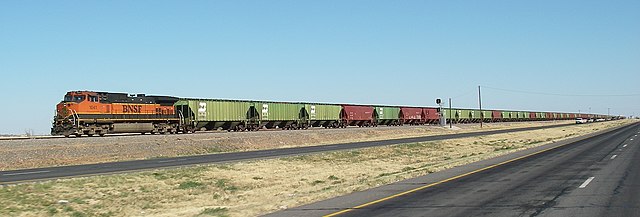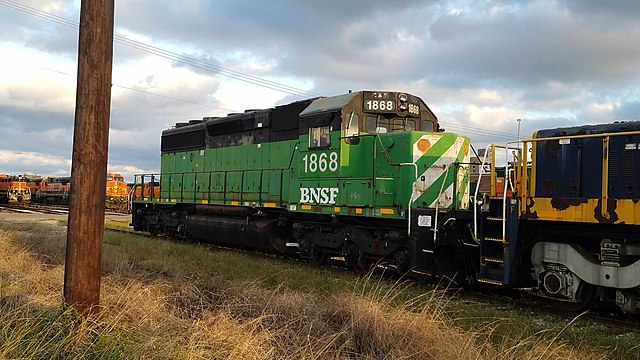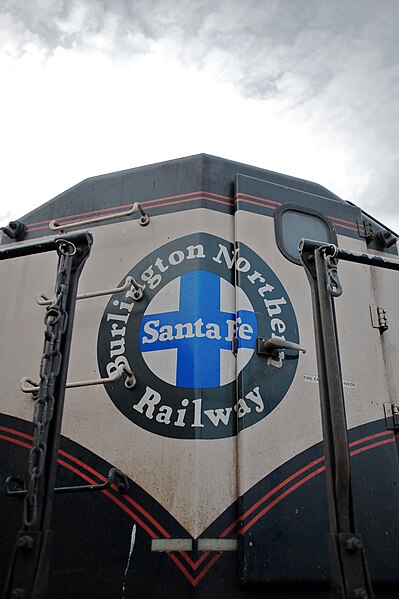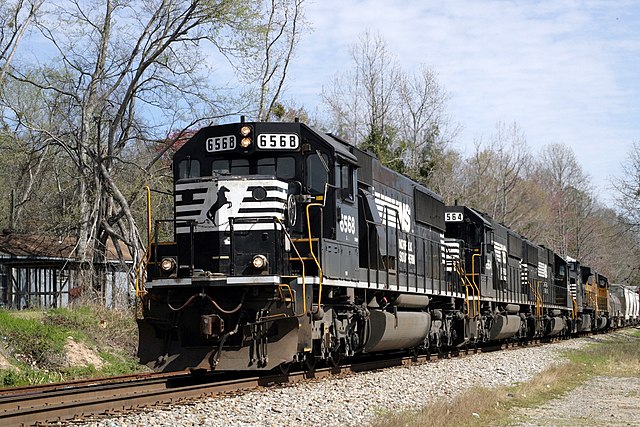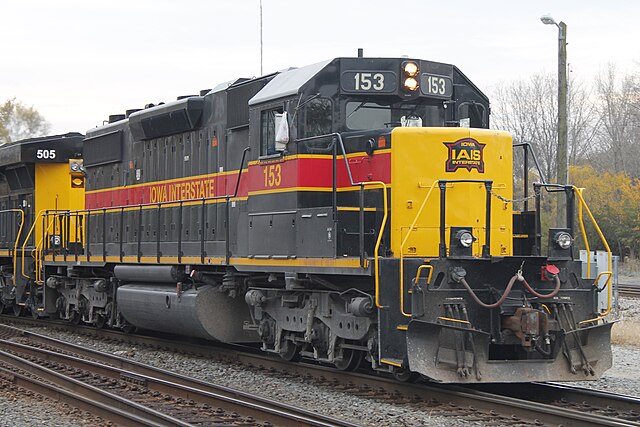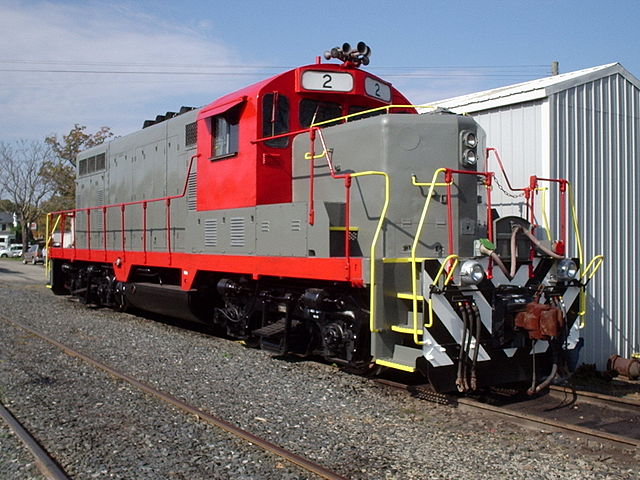BNSF Railway is the largest freight railroad in the United States. One of six North American Class I railroads, BNSF has 36,000 employees, 33,400 miles (53,800 km) of track in 28 states, and over 8,000 locomotives. It has three transcontinental routes that provide rail connections between the western and eastern United States. BNSF trains traveled over 169 million miles in 2010, more than any other North American railroad.
BNSF 7520, a GE ES44DC, in Mojave, California
BNSF Dash 9-44CW #1041 leading a manifest freight train northwest of Shallowater, Texas, running on former ATSF railroad tracks that run parallel to U.S. Route 84 as they cross the high plains of the Llano Estacado. Immediately behind the locomotive are cars painted in the old Burlington Northern livery.
Ex. Burlington Northern BNSF SD40-2, sitting in Galveston, Texas, alongside many other locomotives.
The BNSF 'heritage' logo found on an EMD SD70MAC. The colors of the logo represented the railroads that are part of BNSF
Railroad classes are the system by which freight railroads are designated in the United States. Railroads are assigned to Class I, II or III according to annual revenue criteria originally set by the Surface Transportation Board in 1992. With annual adjustments for inflation, the 2019 thresholds were US$504,803,294 for Class I carriers and US$40,384,263 for Class II carriers.
The Norfolk Southern Railway is a typical example of a Class I railroad in the eastern United States.
The Iowa Interstate Railroad is a typical example of a Class II regional railroad in Iowa, Nebraska, and Illinois.
The Buckingham Branch Railroad is a typical example of a Class III shortline in Virginia.


